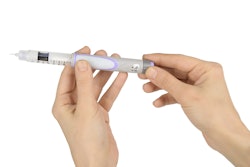Products can rattle around in packages, packages in pallet loads can collapse, and pallet loads in truck trailers can shift. Reducing motion is key to preventing damage. Proper package and pallet load design and secure placement in the trailer can accomplish this, but how do you know if everything works? The obvious answer is to try it and see. But this isn’t always revealing. Discovering damage after a shipment arrives usually doesn’t tell you when it occurred or why. Or you can test the package or pallet load in the lab by placing it on a vibration table that is programmed to simulate a road trip.
The vibration table used by most for many years has been the single-axis shaker. This is a horizontal platform that mimics the up and down motion of the trailer floor. While this machine can reveal design weaknesses, it can’t simulate transportation very well. This is due to the simplicity of the motion and to the way the table is driven. Single-axis shakers only move up and down. Trailers move in six ways—up/down, left/right, front/back, roll, pitch, and yaw. Each of these can affect a package in very different ways. There are machines capable of providing all six motions, but they are complicated and expensive. Single-axis shakers will likely continue to be the machine of choice because vertical motion is thought to be the most hazardous and because these shakers are relatively cheap.
The drive system that controls the shaker requires that trailer motion be measured first. A vibration recorder is attached to the floor and the loaded truck is sent on a representative trip. The recorder samples motion intermittently to conserve memory and later analyzes the recorded data for frequency and amplitude content. A summary signal based on this information is then used to drive the shaker. Unfortunately, this signal removes most of the large amplitude motion, like bumps and potholes, and ignores the order in which events occur. It is also limited to the recorder’s location on the floor, the particular truck, the weight and distribution of the load, smoothness of the road, the fraction of road sampled, and travel speed. The end result is table motion that can be very different from floor motion in real time.
A six-axis vibration table driven in real time is a much better option. The auto industry recognizes this, citing a lack of correlation between single-axis vibration tests and real world damage. Many consumer goods companies share this viewpoint. Research at the School of Packaging at Michigan State University is now underway to address the drive system part. The goal is to replace trailer recording with a computer simulation of a trailer going over a road. The output of this simulation will be a drive signal for a six-axis machine that can be instantly adjusted for different trailers, loads, floor locations, roads and speeds.
Gary Burgess, [email protected], is a Professor at the Michigan State University School of Packaging.


























